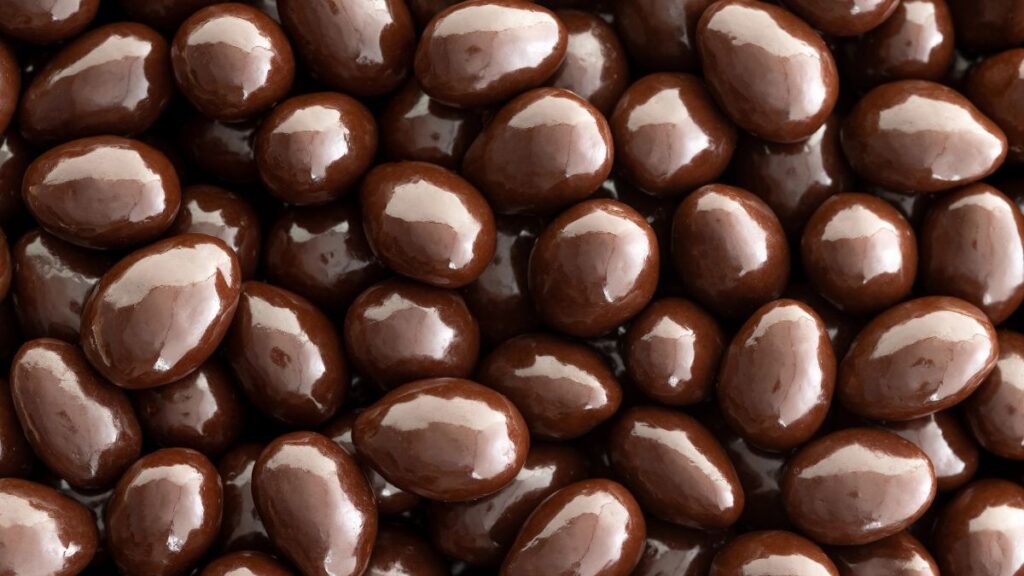17 Terrible Foods for Staining Your Teeth (and How to Minimize Damage)
Bright, white teeth are something many of us strive for, but even with good oral hygiene, some foods and drinks can lead to discoloration. Certain ingredients and compounds, like acids, tannins, and deeply pigmented colors, can cling to the enamel of our teeth, causing stains that are hard to remove.
While cutting out these foods entirely might not be practical, being mindful of their impact can help you avoid discoloration. Here are 17 of the worst culprits when it comes to staining your teeth, along with tips on how to minimize the damage.
Coffee

Coffee is one of the biggest offenders for teeth staining. The dark pigments in coffee are high in tannins, which can stick to your enamel and make your teeth look yellow over time. Additionally, coffee is slightly acidic, which can weaken the enamel, allowing stains to penetrate more easily.
Drinking it black intensifies its staining power since there’s no milk to lighten the color. If you can’t give up your morning cup, consider using a straw to limit contact with your teeth or rinsing your mouth with water afterward. Regular brushing can also help but be cautious not to brush immediately, as acid can soften enamel.
Black Tea

Similar to coffee, black tea contains high levels of tannins that can discolor teeth. In fact, black tea can be even more staining than coffee due to its strong pigments. While switching to lighter teas like green or white can help, frequent tea drinkers may still notice staining.
The warmth of tea can also make your teeth more susceptible to stains. Drinking water alongside your tea or opting for iced tea with a straw may reduce the staining effect. Alternatively, adding milk can slightly lessen the staining effect, as it dilutes the color.
Red Wine

Red wine is known for staining teeth due to its deep red color and tannin content. The acidic nature of wine also erodes enamel, which allows stains to set in more easily. Even just a few sips can lead to discoloration, especially if you drink it frequently.
Consider pairing red wine with a meal, as food can act as a buffer against stains. Drinking water alongside it can also help wash away the pigments before they settle. If you’re really concerned, white wine is a better choice for your teeth.
Soda

Dark sodas, particularly colas, are not only sugary but also highly acidic, which contributes to enamel erosion and discoloration. The caramel color used in many sodas is particularly staining and can lead to yellow or brownish hues on your teeth.
Drinking soda regularly without rinsing or brushing afterward can quickly build up stains. For a tooth-friendly choice, opt for lighter sodas or better yet, drink water instead. Using a straw and limiting soda intake are small ways to protect your teeth from this sugary culprit.
Berries

Berries, like blueberries, blackberries, and raspberries, are packed with natural pigments that can easily stain teeth. While they’re excellent for your health, their dark juices can cling to your teeth and create noticeable stains over time.
The acidity in berries can also soften enamel, making it easier for stains to stick. Try eating berries with other foods, like yogurt, to minimize staining or rinse with water afterward. Frozen or dried berries can also be less staining, though you’ll still want to brush afterward.
Tomato-Based Sauces

Tomato-based sauces, such as marinara and salsa, are highly acidic and deeply pigmented, which can lead to noticeable stains on teeth. The natural red pigments cling to enamel, and the acid can wear it down, making staining even worse.
To reduce the staining, pair tomato sauces with vegetables high in fiber, which can help scrub away stains as you eat. Another option is to have a glass of water while eating or to chew sugar-free gum afterward to encourage saliva flow. Adding leafy greens can also create a bit of a protective layer on your teeth.
Balsamic Vinegar

Balsamic vinegar is a dark, acidic condiment that can stain teeth if consumed frequently. The dark color easily sticks to your teeth, and the acid in vinegar can also weaken enamel, making it more susceptible to stains from other foods.
Salads dressed in balsamic can coat your teeth in this dark liquid, leading to dullness over time. Choosing a lighter vinegar or a cream-based dressing can reduce staining risk. You can also follow up with a quick rinse to wash away any leftover balsamic from your teeth.
Curry

Curry is packed with strong spices and vibrant colors that can easily stain teeth. Turmeric, a common ingredient in curry, is particularly staining due to its bright yellow color. Eating curry often can lead to yellowish discoloration, especially if your enamel is already thin.
If you love curry, consider balancing it with a green salad, which can help scrub your teeth as you eat. Drinking water between bites or after your meal can also help rinse away the spices. Regular brushing and flossing will reduce staining effects over time.
Soy Sauce

Soy sauce is another dark, highly pigmented liquid that can leave stains on your teeth. Its salty, savory flavor is popular in many dishes, but the dark color can cling to enamel and lead to dull, yellowed teeth.
Eating soy sauce dishes with fibrous foods like veggies can help reduce staining. You might also consider switching to lighter sauces when possible. Drinking water during and after a meal with soy sauce can rinse away the dark pigments.
Beetroot

Beetroot’s deep red color is loaded with pigments that can stain teeth almost instantly. Whether in juice, roasted, or added to a salad, beets have a knack for clinging to enamel.
Drinking beet juice with a straw or pairing beets with crunchy foods can help reduce the stain risk. Rinsing your mouth afterward or brushing can also prevent long-term staining. For a less intense color, consider golden beets as an alternative.
Dark Chocolate

While dark chocolate has some health benefits, its deep color can cause teeth discoloration over time. The tannins in chocolate can contribute to staining, especially if you eat it frequently.
Try enjoying dark chocolate with a sip of water to wash away residue. You can also look for chocolates with a lower cocoa content, which may be less staining. Avoid sugary chocolate drinks, as they’re more acidic and staining.
Pomegranate

Pomegranate seeds and juice have a beautiful, dark red color that can be tough on teeth. The pigments cling to enamel, and regular consumption can lead to noticeable staining. Drinking pomegranate juice with a straw can help limit contact with your teeth.
Eating pomegranate seeds with other foods, like yogurt, may also lessen the staining effect. Rinsing your mouth or brushing afterward can keep your smile brighter.
Popsicles and Slushies

Brightly colored popsicles and slushies may be a fun treat, but they’re loaded with artificial colors that can quickly stain teeth. The sugar and acidity in these treats also wear down enamel, making your teeth more prone to staining.
To reduce staining, opt for clear or natural-colored popsicles or drink water immediately after. Limit your intake, and try to choose real fruit pops for a healthier option.
Pickles

Pickles are both acidic and sometimes tinted, which can lead to yellowing of the teeth. The vinegar used in pickling can erode enamel, making your teeth more vulnerable to stains from other foods.
If you enjoy pickles, eat them with a balanced meal to avoid too much acid exposure. Brushing too soon after eating acidic foods can damage enamel, so wait at least 30 minutes before brushing. Rinsing with water right after can help, too.
Energy Drinks

Energy drinks are acidic and often brightly colored, which makes them notorious for staining teeth. The high acidity wears down enamel, making teeth more porous and susceptible to stains.
Drinking these regularly can lead to long-term yellowing. Try using a straw if you do drink energy drinks or choose a less acidic option. Drinking water afterward or rinsing can help protect your teeth.
Grape Juice

Grape juice has a deep purple color that can cause significant staining if consumed regularly. Its acidity also breaks down enamel, increasing the chance of stains.
Drinking grape juice with a straw can help limit contact with your teeth. Rinsing your mouth or brushing afterward may also help reduce discoloration. Consider drinking it only occasionally to avoid buildup.
Cranberry Juice

Cranberry juice is acidic and highly pigmented, which means it can stain teeth quite easily. Frequent consumption can lead to a dull or yellowed appearance, especially if the juice is sweetened.
Opting for diluted or unsweetened cranberry juice may lessen its staining effect. You can also drink it with a straw or rinse afterward to prevent long-lasting stains. If you enjoy cranberry juice, drink it occasionally to keep your smile brighter.
15 Places Where You’re Expected to Tip—But You Really Don’t Have To

Tipping has become a widespread practice in many industries, with the expectation that you’ll leave a little extra for good service. However, not every situation truly warrants a tip, even if you feel pressured to give one.
15 Places Where You’re Expected to Tip—But You Really Don’t Have To
Best Kept Secret Places to Retire: Hidden Havens for Your Golden Years

Selecting where to spend your retirement is both thrilling and complex. You might picture a quiet, lesser-known place with a relaxed lifestyle, rich cultural experiences, and a close community.
Best Kept Secret Places to Retire: Hidden Havens for Your Golden Years







